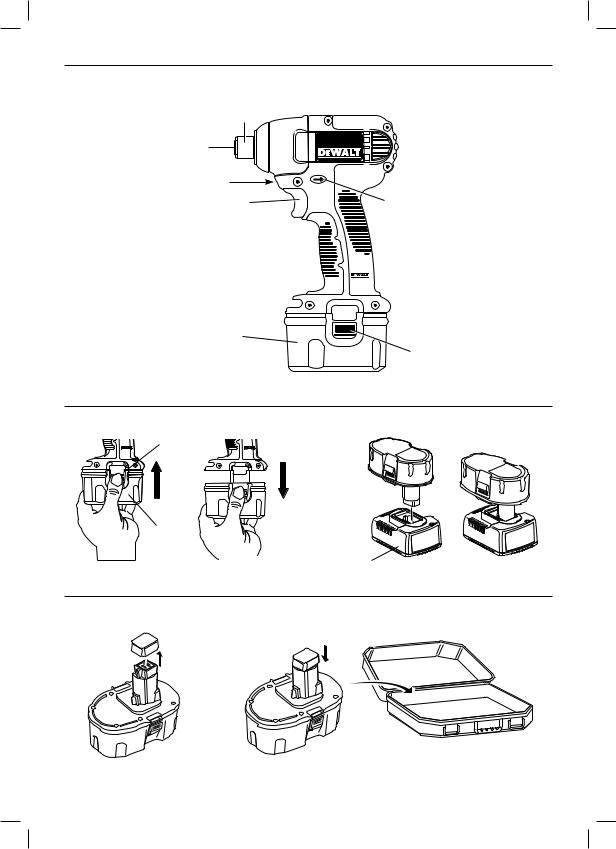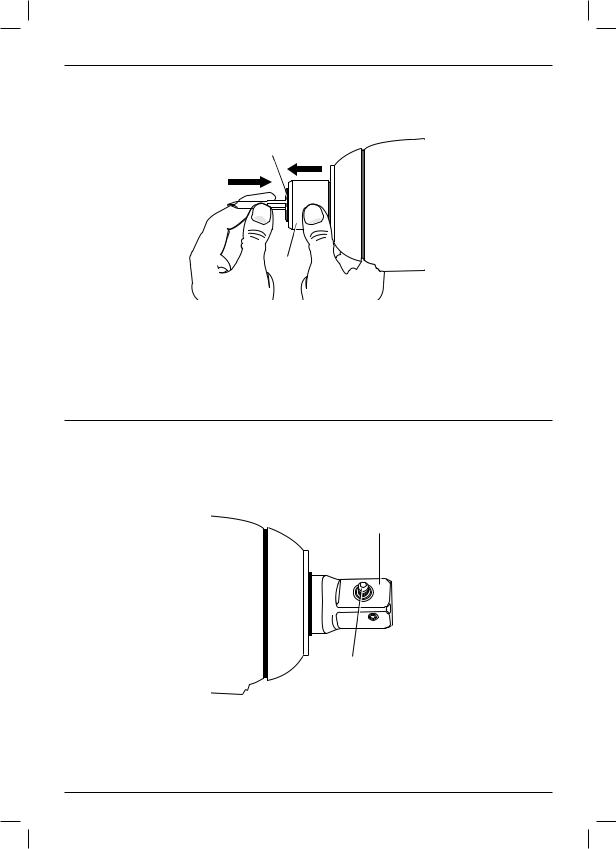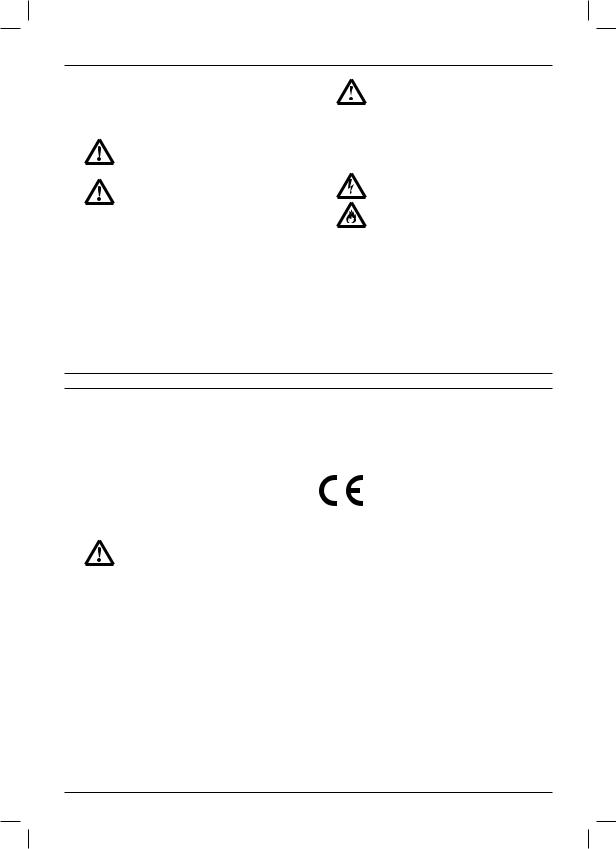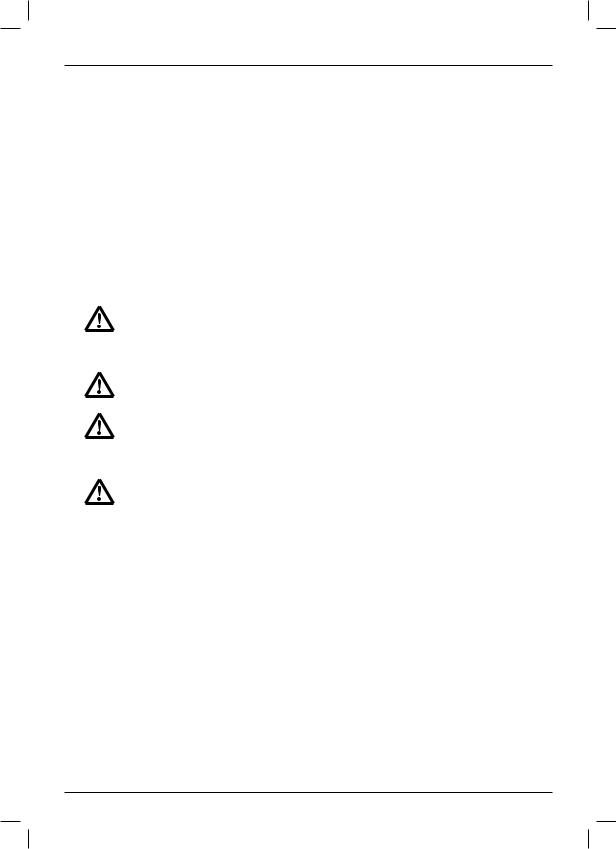DeWalt DC825B User Manual

www. .com
.com
DC820
DC822
DC825
DC827
DC830
DC832
DC835
DC837
DC840
DC845

Figure 1
c
d
g
A |
B |
h
i
Figure 2
i
h
j
Figure 3 |
A |
|
B |
||||||
|
|||||||||
|
|
|
|
|
|
|
|
|
|
|
|
|
|
|
|
|
|
|
|
|
|
|
|
|
|
|
|
|
|
|
|
|
|
|
|
|
|
|
|
|
|
|
|
|
|
|
|
|
|
|
|
|
|
|
|
|
|
|
|
|
|
|
|
|
|
|
|
|
|
|
|
|
|
|
|
|
|
|
|
|
|
|
|
|
|
|
|
|
|
1

Figure 4
d
c
Figure 5
f
e
2

ENGLISH
DC820, DC822, DC825, DC827, DC830, DC832, DC835, DC837, DC840, DC845
CORDLESS IMPACT WRENCHES/DRIVERS
Congratulations!
You have chosen a DEWALT tool. Years of experience, thorough product development and innovation make DEWALT one of the most reliable partners for professional power tool users.
Technical data
|
|
DC820 |
DC822 |
DC825 |
DC827 |
DC830 |
DC832 |
DC835 |
DC837 |
DC840 |
DC845 |
Voltage |
VDC |
18 |
18 |
18 |
18 |
14.4 |
14.4 |
14.4 |
14.4 |
12 |
12 |
Battery Type |
|
NiCd/NiMH |
– |
NiCd/NiMH |
– |
NiCd/NiMH |
– |
NiCd/NiMH |
– |
NiCd/NiMH NiCd/NiMH |
|
|
|
– |
Li-Ion |
– |
Li-Ion |
– |
Li-Ion |
– |
Li-Ion |
– |
– |
No-load speed |
min-1 |
0-2400 |
0-2400 0-2400 0-2400 |
0-2400 0-2400 |
0-2400 0-2400 |
0-2400 0-2400 |
|||||
Impact |
min-1 |
2700 |
2700 |
2700 |
2700 |
2700 |
2700 |
2700 |
2700 |
2700 |
2700 |
Max. torque |
Nm |
195 |
195 |
150 |
150 |
180 |
180 |
140 |
140 |
160 |
130 |
Tool holder |
|
1/2" |
1/2" |
1/4" |
1/4" |
1/2" |
1/2" |
1/4" |
1/4" |
1/2" |
1/4" |
|
|
Square |
Square |
Hex |
Hex |
Square |
Square |
Hex |
Hex |
Square |
Hex |
Max. bolt size |
mm |
M16 |
M16 |
M12 |
M12 |
M16 |
M16 |
M12 |
M12 |
M16 |
M12 |
Weight (without |
|
|
|
|
|
|
|
|
|
|
|
battery pack) |
kg |
0.98 |
0.96 |
0.98 |
0.96 |
0.96 |
0.96 |
0.96 |
0.96 |
0.96 |
0.96 |
|
|
|
|
|
|
|
|
||||
Battery pack |
|
|
DE9180 |
DE9503 |
DE9140 |
DE9502 |
DE9501 |
||||
Battery type |
|
|
Li-Ion |
NiMH |
Li-Ion |
NiMH |
NiMH |
||||
Voltage |
|
VDC |
|
18 |
18 |
|
14.4 |
14.4 |
|
12 |
|
Capacity |
|
Ah |
|
2.0 |
2.6 |
|
2.0 |
2.6 |
|
2.6 |
|
Weight |
|
kg |
0.68 |
1.0 |
|
0.58 |
0.86 |
|
0.69 |
||
Charger |
|
|
|
DE9130 |
|
|
DE9135 |
|
|
|
|
Mains voltage |
|
VAC |
|
230 |
|
|
|
230 |
|
|
|
Battery type |
|
|
|
NiCd/NiMH |
|
NiCd/NiMH/Li-Ion |
|
|
|
||
Approx. charging time |
min |
|
30 |
|
|
|
40 |
|
|
|
|
|
|
|
(2.0 Ah battery packs) |
(2.0 Ah battery packs) |
|
|
|||||
Weight |
|
kg |
|
0.52 |
|
|
0.52 |
|
|
|
|
|
|
|
|
|
|
|
|
|
|
|
|
Fuses: |
|
|
|
|
|
|
|
|
|
|
|
Europe |
|
230 V tools |
10 Amperes, mains |
|
|
|
|
|
|||
U.K. & Ireland |
|
230 V tools |
13 Amperes, in plugs |
|
|
|
|
|
|||
28 3

ENGLISH
Definitions: Safety Guidelines |
|
|
CAUTION: Indicates a potentially |
|
|||||||
The definitions below describe the level of severity |
|
hazardous situation which, if not |
|
||||||||
|
avoided, may result in minor or |
|
|||||||||
for each signal word. Please read the manual and |
|
|
|||||||||
|
moderate injury. |
|
|
||||||||
pay attention to these symbols. |
|
|
|
|
|
||||||
|
|
|
CAUTION: Used without the safety alert |
||||||||
DANGER: Indicates an imminently |
|
||||||||||
|
symbol indicates a potentially hazardous |
||||||||||
hazardous situation which, if not avoided, |
|
||||||||||
|
situation which, if not avoided, may |
||||||||||
will result in death or serious injury. |
|
||||||||||
|
result in property damage. |
|
|||||||||
WARNING: Indicates a potentially |
|
|
|||||||||
|
Denotes risk of electric shock. |
|
|||||||||
hazardous situation which, if not |
|
|
|
||||||||
|
|
|
|
|
|
|
|
||||
avoided, could result in death or |
|
Denotes risk of fire. |
|
|
|||||||
serious injury. |
|
|
|
|
|
||||||
|
|
|
|
|
|
|
|
|
|||
|
|
|
|
|
|
|
|
|
|
|
|
|
|
DC820 |
DC822 |
DC825 |
DC827 |
DC830 |
DC832 |
DC835 |
DC837 |
DC840 |
DC845 |
LpA (sound pressure) |
dB(A |
91 |
91 |
90 |
90 |
91 |
91 |
90 |
90 |
91 |
90 |
KpA (sound pressure |
|
|
|
|
|
|
|
|
|
|
|
uncertainty K) |
dB(A) |
3 |
3 |
3 |
3 |
3 |
3 |
3 |
3 |
3 |
3 |
LWA (acoustic power) |
dB(A) |
102 |
102 |
101 |
101 |
102 |
102 |
101 |
101 |
102 |
101 |
KWA (acoustic power |
|
|
|
|
|
|
|
|
|
|
|
uncertainty K) |
dB(A) |
3 |
3 |
3 |
3 |
3 |
3 |
3 |
3 |
3 |
3 |
Vibration total values (triax vector sum) determined according to EN60745:
Vibration |
|
|
|
|
|
|
|
|
|
|
|
emission value |
m/s² |
9.7 |
9.7 |
13.7 |
13.7 |
9.7 |
9.7 |
13.7 |
13.7 |
9.7 |
13.7 |
Uncertainty K |
m/s² |
2.3 |
2.3 |
5.3 |
5.3 |
2.3 |
2.3 |
5.3 |
5.3 |
2.3 |
5.3 |
The declared vibration emission value has been measured in accordance with a standard test method and may be used for comparing one tool with another.
The declared vibration emission value may also be used in a preliminary assessment of exposure.
EC-Declaration of conformity
DC820, DC822, DC825, DC827, DC830, DC832, DC835, DC837, DC840, DC845
WARNING: The vibration emission |
DEWALT declares that these tools have been |
|
value during actual use of the power |
designed in compliance with: |
|
tool can differ from the declared value |
98/37/EC, 89/336/EEC, 2006/95/EC, EN 60745-1, |
|
depending on the ways in which the tool |
EN 60745-2-2, EN 55014-2, EN 55014-1. |
|
is used. This could lead to a significant |
|
|
underestimate of exposure when the |
For more information, please contact DEWALT at the |
|
tool is used regularly in such a way. |
address below, or refer to the back of the manual. |
|
An estimation of the level of exposure to vibration |
Director Engineering and Product Development |
|
experienced during a given period of work should |
||
Horst Grossmann |
||
also take into account the times when the tool is |
||
|
||
switched off and when it is running idle in addition to |
|
|
the trigger time. |
|
|
This may significantly reduce the exposure level over |
|
|
the total working period. |
|
429

ENGLISH
WARNING: To reduce the risk of injury, read the instruction manual.
General Power Tool Safety Warnings
WARNING! Read all safety warnings and instructions Failure to follow the warnings and instructions may result in electric shock, fire and/or serious injury.
SAVE ALL WARNINGS AND INSTRUCTIONS
FOR FUTURE REFERENCE.
The term “power tool" in the warnings refers to your mains-operated (corded) power tool or batteryoperated (cordless) power tool.
1)WORK AREA SAFETY
a)Keep work area clean and well lit.
Cluttered or dark areas invite accidents.
b)Do not operate power tools in explosive atmospheres, such as in the presence of flammable liquids, gases or dust. Power tools create sparks which may ignite the dust or fumes.
c)Keep children and bystanders away while operating a power tool. Distractions can cause you to lose control.
2)ELECTRICAL SAFETY
a)Power tool plugs must match the outlet. Never modify the plug in any way. Do not use any adapter plugs with earthed (grounded) power tools. Unmodified plugs and matching outlets will reduce risk of electric shock.
b)Avoid body contact with earthed or grounded surfaces such as pipes, radiators, ranges and refrigerators. There is an increased risk of electric shock if your body is earthed or grounded.
c)Do not expose power tools to rain or wet conditions. Water entering a power tool will increase the risk of electric shock.
d)Do not abuse the cord. Never use the cord for carrying, pulling or unplugging the power tool. Keep cord away from heat, oil, sharp edges or moving parts.
Damaged or entangled cords increase the risk of electric shock.
e)When operating a power tool outdoors, use an extension cord suitable for outdoor use. Use of a cord suitable for outdoor use reduces the risk of electric shock.
f)If operating a power tool in a damp location is unavoidable, use a residual current device (RCD) protected supply.
Use of an RCD reduces the risk of electric shock.
3)PERSONAL SAFETY
a)Stay alert, watch what you are doing and use common sense when operating a power tool. Do not use a power tool while you are tired or under the influence of drugs, alcohol or medication. A moment of inattention while operating power tools may result in serious personal injury.
b)Use personal protective equipment. Always wear eye protection. Protective equipment such as dust mask, non-skid safety shoes, hard hat, or hearing protection used for appropriate conditions will reduce personal injuries.
c)Prevent unintentional starting. Ensure the switch is in the off position before connecting to power source and/or battery pack, picking up or carrying the tool. Carrying power tools with your finger on the switch or energising power tools that have the switch on invites accidents.
d)Remove any adjusting key or wrench before turning the power tool on. A wrench or a key left attached to a rotating part of the power tool may result in personal injury.
e)Do not overreach. Keep proper footing and balance at all times. This enables better control of the power tool in unexpected situations.
f)Dress properly. Do not wear loose clothing or jewellery. Keep your hair, clothing and gloves away from moving parts. Loose clothes, jewellery or long hair can be caught in moving parts.
g)If devices are provided for the connection of dust extraction and collection facilities, ensure these are connected and properly used. Use of dust collection can reduce dust-related hazards.
4)POWER TOOL USE AND CARE
a)Do not force the power tool. Use the correct power tool for your application.
The correct power tool will do the job better and safer at the rate for which it was designed.
b)Do not use the power tool if the switch does not turn it on and off. Any power tool that cannot be controlled with the switch is dangerous and must be repaired.
c)Disconnect the plug from the power source and/or the battery pack from the power tool before making any adjustments, changing accessories, or
storing power tools. Such preventive safety
30 5

ENGLISH
measures reduce the risk of starting the power tool accidentally.
d)Store idle power tools out of the reach of children and do not allow persons unfamiliar with the power tool or these instructions to operate the power tool.
Power tools are dangerous in the hands of untrained users.
e)Maintain power tools. Check for misalignment or binding of moving parts, breakage of parts and any other condition that may affect the power tool’s operation. If damaged, have the power tool repaired before use. Many accidents are caused by poorly maintained power tools.
f)Keep cutting tools sharp and clean.
Properly maintained cutting tools with sharp cutting edges are less likely to bind and are easier to control.
g)Use the power tool, accessories and tool bits etc., in accordance with these instructions taking into account the working conditions and the work to be performed. Use of the power tool for operations different from those intended could result in a hazardous situation.
5)BATTERY TOOL USE AND CARE
a)Recharge only with the charger specified by the manufacturer. A charger that is suitable for one type of battery pack may create a risk of fire when used with another battery pack.
b)Use power tools only with specifically designated battery packs. Use of any other battery packs may create a risk of
injury and fire.
c)When battery pack is not in use, keep it away from other metal objects like paper clips, coins, keys, nails, screws or other small metal objects that can make a connection from one terminal to another.
Shorting the battery terminals together may cause burns or a fire.
d)Under abusive conditions, liquid may be ejected from the battery, avoid contact. If contact accidentally occurs, flush with water. If liquid contacts eyes, additionally seek medical help. Liquid ejected from the battery may cause irritation or burns.
6)SERVICE
a)Have your power tool serviced by a qualified repair person using only identical replacement parts. This will ensure that the safety of the power tool is maintained.
ADDITIONAL SPECIFIC SAFETY RULES
Safety Instructions for All
Impact Drills
•Wear ear protectors with impact drills.
Exposure to noise can cause hearing loss.
•Use auxiliary handles supplied with the tool.
Loss of control can cause personal injury.
•Hold power tools by insulated gripping surfaces when performing an operation where the cutting tool may contact hidden wiring or its own cord. Contact with a “live" wire will make exposed metal parts of the tool “live" and shock the operator.
•Use clamps or other practical way to secure and support the workpiece to a stable platform. Holding the work by hand or against your body is unstable and may lead to loss of control.
•Wear safety goggles or other eye protection. Hammering and drilling operations cause chips to fly. Flying particles can cause permanent eye damage.
•Bits, sockets and tools get hot during operation. Wear gloves when touching them.
•Do not operate this tool for long periods of time. Vibration caused by tool action may be harmful to your hands and arms. Use gloves to provide extra cushion and limit exposure by taking frequent rest periods.
Residual risks
In spite of the application of the relevant safety regulations and the implementation of safety devices, certain residual risks cannot be avoided. These are:
–Impairment of hearing
–Risk of personal injury due flying particles.
–Risk of burns due to accessories becoming hot during operation.
–Risk of personal injury due to prolonged use.
Labels on tool
The following pictograms are shown on the tool:
Wear ear protection.
Wear eye protection.
631

ENGLISH
DATE CODE POSITION
Date Code, which also includes the year of manufacture, is printed into the housing surface that forms the mounting joint between tool and battery!
Example:
2007 XX XX
Year of Manufacture
Important Safety Instructions for All Battery Chargers
SAVE THESE INSTRUCTIONS: This manual contains important safety and operating instructions for the DE9130/DE9135 battery chargers.
•Before using charger, read all instructions and cautionary markings on charger, battery pack, and product using battery pack.
DANGER: Electrocution hazard. 230 volts are present at charging
terminals. Do not probe with conductive objects. Electric shock or electrocution may result.
WARNING: Shock hazard. Do not allow any liquid to get inside charger. Electric shock may result.
CAUTION: Burn hazard. To reduce the risk of injury, charge only DEWALT rechargeable batteries. Other types of batteries may burst causing personal injury and damage.
CAUTION: Under certain conditions, with the charger plugged in to the power supply, the exposed charging contacts inside the charger can be shorted by foreign material. Foreign materials of a conductive nature such as, but not limited to, steel wool, aluminum foil, or any buildup of metallic particles should be kept away from charger cavities. Always unplug the charger from the power supply when there is no battery pack in the cavity. Unplug charger before attempting to clean.
•DO NOT attempt to charge the battery pack with any chargers other than the ones in this manual. The charger and battery pack are specifically designed to work together.
•These chargers are not intended for any uses other than charging DEWALT rechargeable batteries. Any other uses may result in risk of fire, electric shock or electrocution.
•Do not expose charger to rain or snow.
•Pull by plug rather than cord when disconnecting charger. This will reduce risk of damage to electric plug and cord.
•Make sure that cord is located so that it will not be stepped on, tripped over, or otherwise subjected to damage or stress.
•Do not use an extension cord unless it is absolutely necessary. Use of improper
extension cord could result in risk of fire, electric shock, or electrocution.
•An extension cord must have adequate wire size (AWG or American Wire Gauge) for safety. The smaller the gauge number of the wire, the greater the capacity of the cable, that is 16 gauge has more capacity than 18 gauge. When using more than one extension to make up the total length, be sure each individual extension contains at least the minimum wire size.
•Do not place any object on top of charger or place the charger on a soft surface that might block the ventilation slots and result in excessive internal heat. Place the charger in a position away from any heat source. The charger is ventilated through slots in the top and the bottom of the housing.
•Do not operate charger with damaged cord or plug — have them replaced immediately.
•Do not operate charger if it has received a sharp blow, been dropped, or otherwise damaged in any way. Take it to an authorized service center.
•Do not disassemble charger; take it to an authorized service center when service or repair is required. Incorrect reassembly may result in a risk of electric shock, electrocution or fire.
•Disconnect the charger from the outlet before attempting any cleaning. This will reduce the risk of electric shock. Removing the battery pack will not reduce this risk.
•NEVER attempt to connect 2 chargers together.
•The charger is designed to operate on standard 230V household electrical power. Do not attempt to use it on any other voltage. This does not apply to the vehicular charger.
SAVE THESE INSTRUCTIONS
32 7
